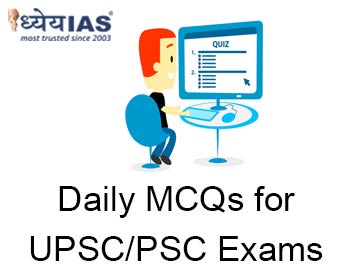Home > Daily-mcqs
Daily-mcqs 23 Sep 2025

Q1:
Consider the following statements about the Anand Marriage Act, 1909: 1. The Act was originally introduced under the guidance of Bhai Kahan Singh Nabha. 2. The Act's jurisdiction covered all of India until it was amended in 1959 to exclude Jammu and Kashmir. 3. The 2012 amendment required marriages registered under the Anand Marriage Act to also be registered under the Hindu Marriage Act, 1955. How many of the above statements is/are correct?
A: Only one
B: Only two
C: All three
D: None
Answer: A
Explanation:
Statement 1 is incorrect: The Anand Marriage Act of 1909 was introduced under the guidance of Maharaja of Nabha, Tikka Ripudaman Singh, with assistance from Bhai Kahan Singh Nabha.
Statement 2 is correct: Initially, the Anand Marriage Act, 1909 applied to all of India. However, in 1959, Act No. 48 was passed, which excluded Jammu and Kashmir from the Act's jurisdiction.
Statement 3 is incorrect: The 2012 amendment to the Anand Marriage Act aimed to provide exclusive registration for Sikh marriages under the Anand Marriage Act. It did not require dual registration under the Hindu Marriage Act or any other laws.
Q2:
With reference to the recognition of the State of Palestine by the United Kingdom, Canada, and Australia in recent times, consider the following statements: 1. These recognitions represent the first instance of any G7 countries formally recognising Palestine as a sovereign state. 2. The recognition grants Palestine full membership in the United Nations. 3. The recognition has been linked to renewed support for the two-state solution to the Israel–Palestine conflict. 4. Under international law, recognition of a state by individual countries automatically results in defined borders and effective control over the territory. Which of the above statements is/are correct?
A: 1 and 2 only
B: 1 and 3 only
C: 2 and 3 only
D: 1, 2, 3 and 4
Answer: B
Explanation:
Q3:
With reference to the Sawalkote Hydroelectric Project (HEP) on the Chenab River, consider the following statements: 1. The Sawalkote project, once completed, will be the largest hydropower project in Jammu & Kashmir. 2. The dam is designed to completely divert the Chenab’s flow to maximize power generation, even during lean seasons. 3. The project includes an auxiliary power unit to maintain ecological flow downstream. 4. It is located in the districts of Doda and Kishtwar in Jammu & Kashmir. Which of the statements given above is/are correct?
A: 1 and 2 only
B: 2 only
C: 1 and 3 only
D: 1, 2, 3 and 4
Answer: C
Explanation:
Q4:
Consider the following statements: 1. The Indus Waters Treaty (IWT) allows India unrestricted use of western rivers, including the Chenab, for all purposes including irrigation and storage. 2. India's revival of the Sawalkote project is partly influenced by a recent decision to place the IWT in abeyance. 3. The Chenab River originates in the Zanskar range and is called the Chandrabhaga in its upper reaches. 4. The Chenab River eventually merges with the Beas River before draining into the Indus. Which of the statements given above is/are correct?
A: 1 and 2 only
B: 1 and 3 only
C: 2 and 3 only
D: 1, 2, 3 and 4
Answer: C
Explanation:
Q5:
With reference to the recent developments regarding the H-1B visa policy of the United States, consider the following statements: 1. The H-1B visa allows U.S. companies to hire foreign workers for low-skilled jobs in agriculture,IT and domestic work. 2. The recent fee hike for H-1B visas is expected to disproportionately affect Indian IT firms due to their high dependence on onsite deployments. 3. The H-1B visa is valid for a maximum of six years in most cases. 4. The total annual cap for H-1B visas includes 85,000 slots, with 20,000 of them reserved for U.S. university graduates with a master’s degree or higher. Which of the above statements is/are correct?
A: 1 and 2 only
B: 1 and 3 only
C: 2 ,3 and 4 only
D: 1, 2, 3 and 4
Answer: C
Explanation: